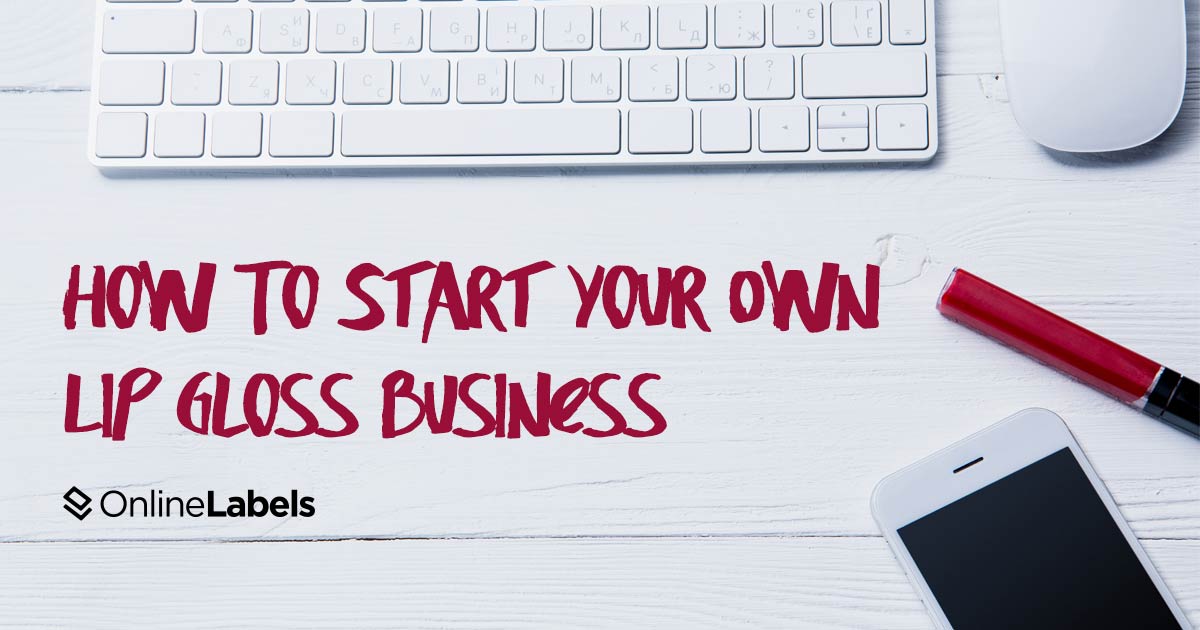How To Start Your Own Lip Gloss Business

Starting your own lip gloss business is cost-efficient and a relatively easy venture to jumpstart — with the right tips and tools, like quality lip gloss labels, of course. So what do you need to make it come to life? Let’s jump right in.
Understand Your Market & Define Your Niche
Lip gloss is purchased by most age groups and has no cultural barriers. This offers you a very broad market to "play" in, and also enables you to define your niche within that space.
Think about what makes your lip gloss unique: Is it intended for a certain audience? Created with clean ingredients? Develop a product (or product line) and market it around what makes the product special, or who the product is catered toward.
For example, maybe your product is great for pre-teens who are experimenting with makeup for the first time. Clean ingredients may appeal to the parents who are purchasing the product, and cool branding toward that specific age group could make them feel special and want to buy something "created for them."
Know the Regulations
While the FDA doesn’t technically regulate cosmetic products (you don’t need FDA approval before going to market), they do regulate cosmetic labels under the Fair Packaging and Labeling Act (FPLA).
The FPLA prohibits cosmetics from being compromised in safety or effectiveness and from being misbranded. Essentially, you can’t lie to your customers.
You can find a list of restricted ingredients and a few tips and suggestions to stay FDA-compliant in our article, "What are the FDA Labeling Requirements for Cosmetic Products?"
Get Equipment, Ingredients & a Sales Platform
What do you need to make all of this happen? Let’s start with equipment. You’ll need to invest in a blending/mixing machine, molding equipment, pipettes and syringes for accurate measuring, packaging, and a sealing machine.
For supplies, your ingredients can vary — that’s part of what makes your product unique. Some notable bases include:
- Coconut oil: moisturizing
- Olive oil/grape seed oil: skin barrier protection
- Vitamin E essence: helps dryness and skin regeneration
- Beeswax: sun and UV protection
- Cocoa butter/shea butter: hydration
- Mica pigments (purified): color sheen
This may seem obvious, but keep in mind that you’re creating a lip product so any additional scents, coloring, etc., must be safe for consumption. Safety should always be your top priority.
Last but not least, you need a sales platform. This enables you to sell your product to a wide audience (online) and gives you a place to direct your marketing efforts.
There are plenty of easy-to-create e-commerce storefronts such as Etsy or Shopify, or you can build a website using platforms like Wix, SquareSpace, or Wordpress which also have e-commerce add-on options.
Price Your Products
There are many factors to consider when pricing any kind of product, but beauty can have some unique standards.
While many small businesses or startups may price their products low to attract customers, in the beauty world, low prices are often equated with poor quality ingredients. If you use clean or pricier ingredients, your prices should reflect that.
It’s a fine line, you don’t want to price too high, either. Think about your target audience, and if you’re able, ask a sample of that group about the prices you have in mind. Using the pre-teen example, you could ask a few moms of that audience to see what they would be willing/think is appropriate to pay for your product.
Branding & Labels
Don’t underestimate the power of a good label. People can be drawn to branding and packaging before they even know what the product is. You just need to catch their attention.
The first and most important step is figuring out your brand and its "vibe." What colors, designs, or words (or none of the above) do you want to reflect your brand? Who is your brand if it were a person? What is your message? Who is your ideal audience? Take these bits and pieces and use it to create something simple but memorable. Easier said than done, I know. But I promise it’s worth the time and effort.
Once you have an idea of the brand as a whole, start thinking about your product label and packaging. What experience do you want your audience to have opening your product? What do you want the label to look like?
Keep in mind that the label needs to be legible, so words should be easy to read (no crazy fonts) and colors need to be clear and work together.
We hope this article was helpful for you as you endeavor to start your very own lip gloss business.
When you’re ready to design your label, explore different sizes, templates, and lip gloss labels that are quick and easy to create!


